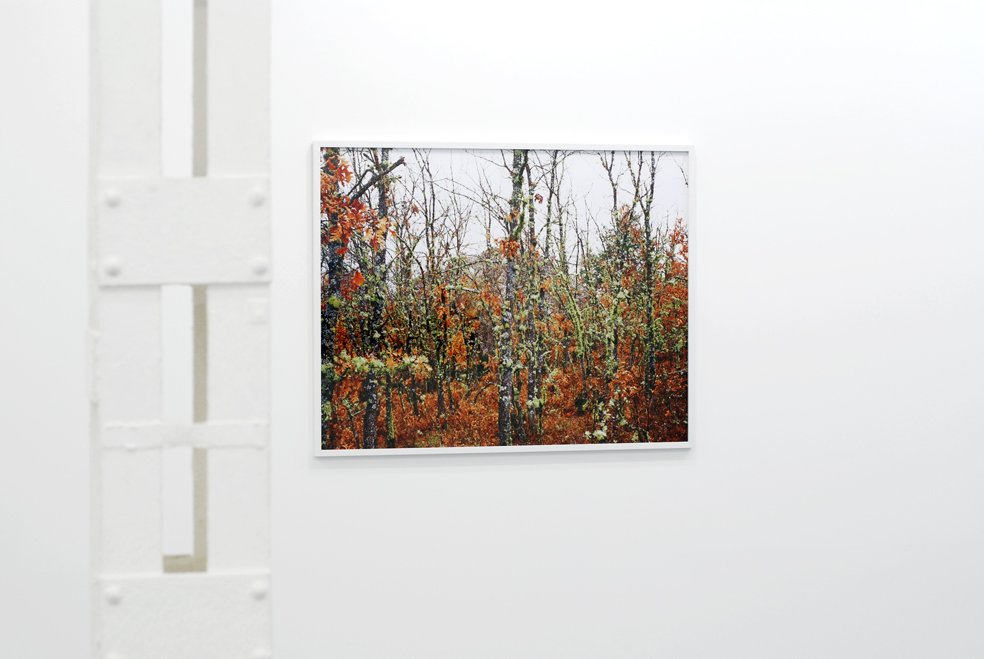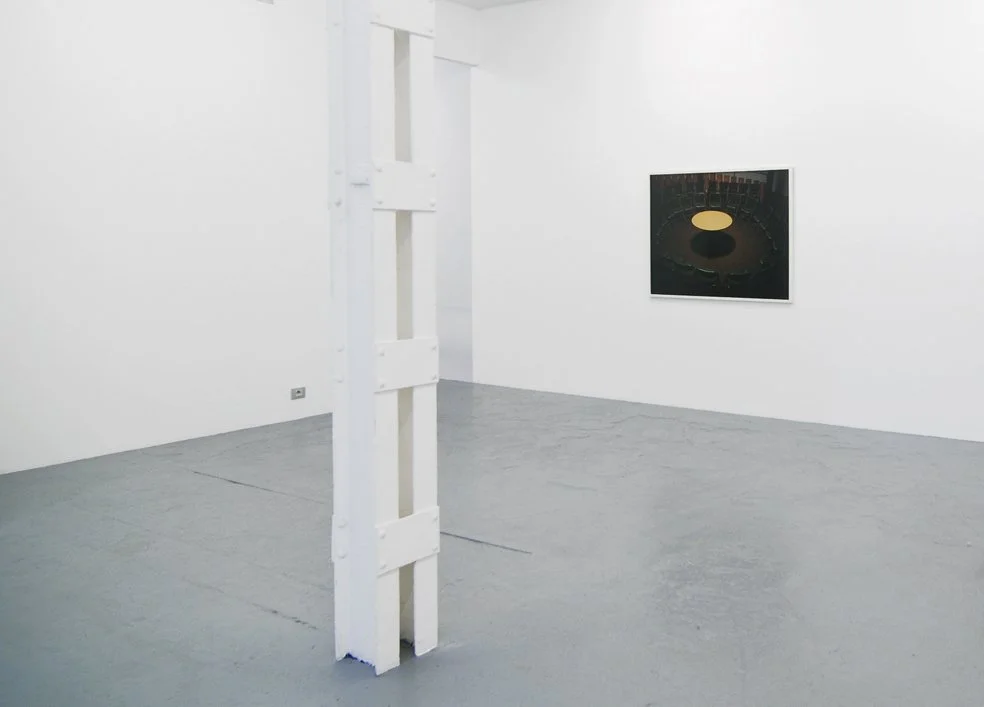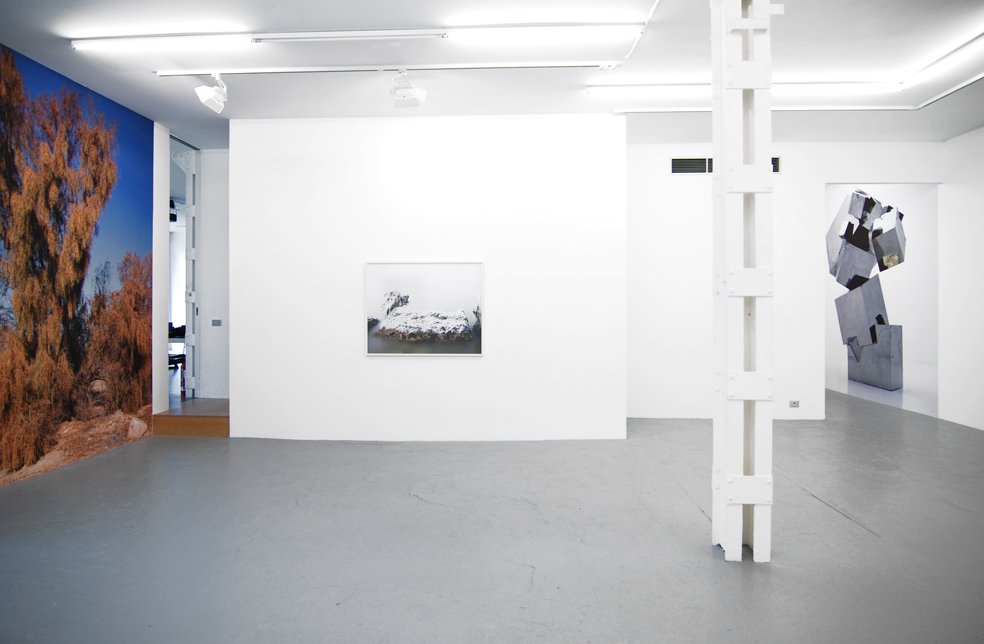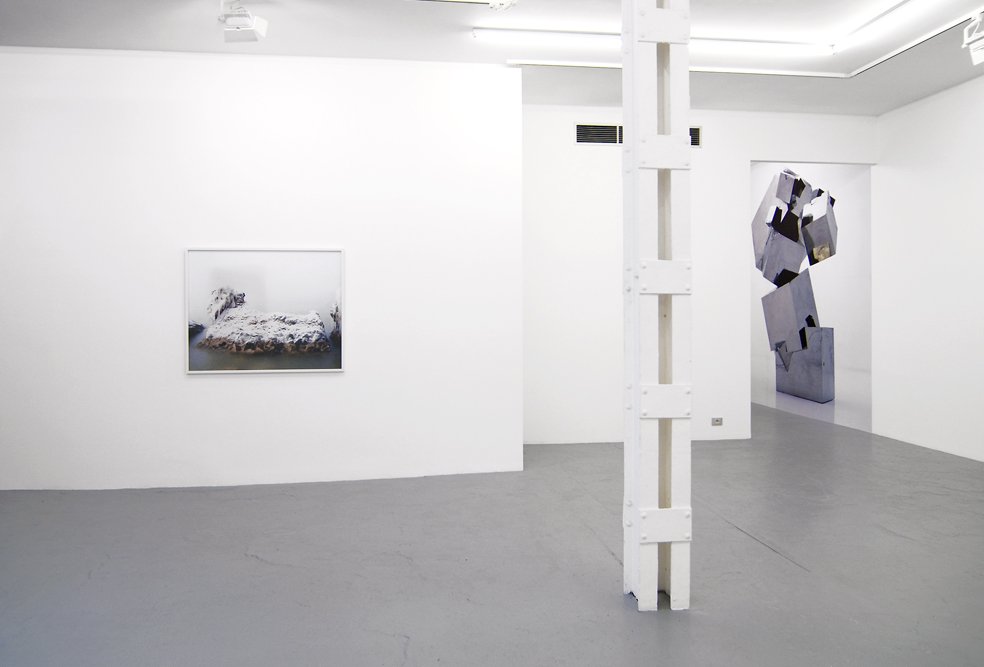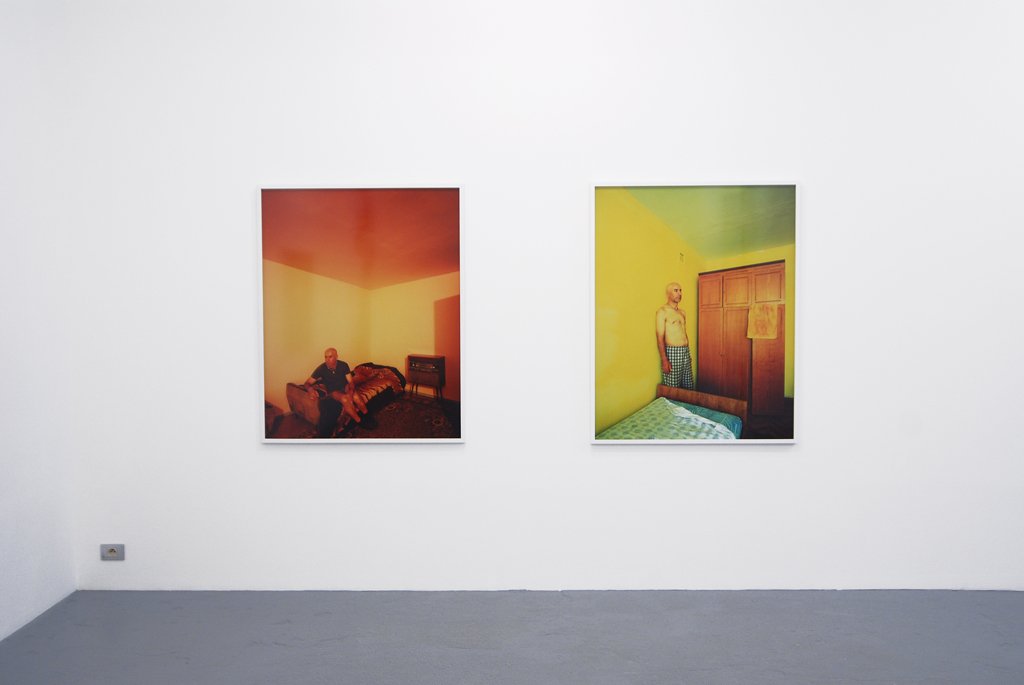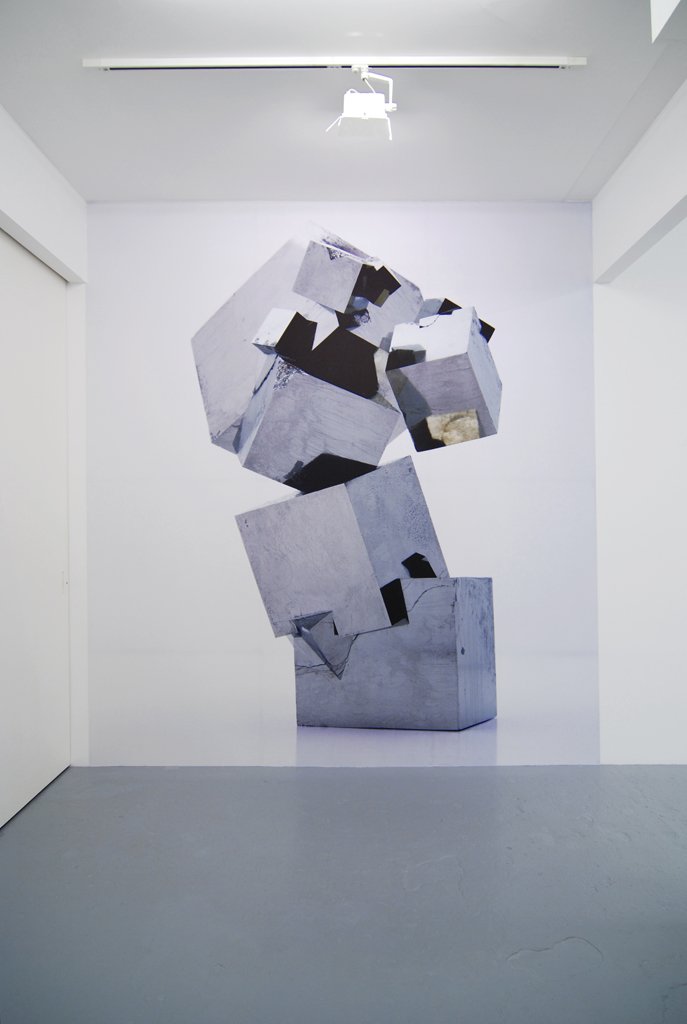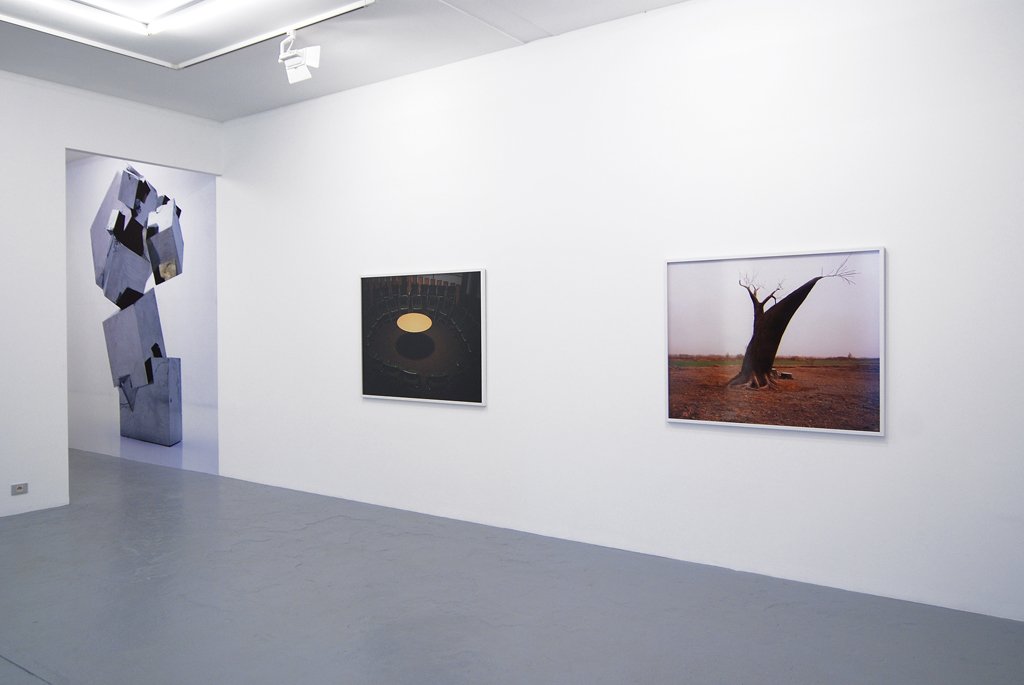Geert Goiris: Frontier
13 April–26 May 2007, Brussels
Geert Goiris, Frontier, Catherine Bastide gallery, Brussels, 2007, exhibition view
Frontier
The work of Geert Goiris has all the properties of arranged photography, as the images show the world in a descriptive manner. Everything does justice to what is observed: the size, the orderly composition and the natural point of view. It is what it is. It is clear photography, without make-up or frills. It gives the impression that the faithful observer is on the go, but it just seems this way.
The viewer soon realizes that his first conclusion is not right. Instead of getting a hold on the world, holding on to a piece of the world and saving it, the world is stolen from him. Something creeps in that they cannot place.
The inconsistency of the chosen subjects contradicts any desire to document it. Some photographs are about the open space of nature, sometimes unspoilt (Sphinx), other times taken up by artefacts (Time Warp). Other photographs do not depict a panoramic view and show close-ups (Solitary Tree, Desert Tree), or even with so much detail that a branch becomes an interplay of lines (Burgos #1 and #2). There are images of architectural monuments (Junkerhaus and Door). In rare instances, the subject is technical (Beluga). In one case, we see an unspecified object or collection of objects (Fool’s Gold). Just when we think we have found a link – the absence of the human figure – we see a man in an interior (In Tashkent and In Aralsk). In fact, everything is an exception. Something eludes us. Something is missing. This is what it is about: that which escapes us, not by coincidence, but essentially. We feel that ‘something’ links these images, but we do not know what. It is not about what Geert Goiris describes, but about what is not there, something that cannot be shown in any other way than as elusive.
The images of Geert Goiris have the remarkable characteristic of avoiding any narrative structure. What makes them strange is that we do not have the urge to wonder what precedes this moment and what follows it. They are cut off from the before and the after.
The images of Geert Goiris have the remarkable characteristic of avoiding any narrative structure. What makes them strange is that we do not have the urge to wonder what precedes this moment and what follows it. They are cut off from the before and the after.
Time is a paradox; it only exists as a border. The now is the only moment in time that really exists. We remember the past; we foresee the future. These are mental operations. The only real time is the hic et nunc. Yet, the now is ungraspable; when it appears, it disappears. It was not there a minute ago. Then it is no longer there. The now merely consists of a division between the expansive time on either side. It is nothing more than an infinitesimal border moment. It is almost nothing and yet complete in itself. It can only be experienced as non-existent.
The border moment of time refers back to space. Just like time is reduced to less than a moment, what ‘is’ in the world becomes less than a dot. This is when the wonder occurs. It is as if the world holds its breath for a split second. By freeing the world of linear time, it becomes the threshold: it manifests itself in its ‘being there’, in its mystery. The world is no longer this specific place; it becomes ‘elsewhere’. Meeting then means that extremely rare, always once-only moment when a detail allows the world to present itself in its full dimension. This is why the work of Geert Goiris is not recording photography. The best way to describe it is as ‘encountering photography’.
Seeking out this one-off moment is impossible. At most, it happens to us. We bump into it unexpectedly, like a gift. It is like a hapax legomenon. This linguistic concept refers to a word that is only found once in a continuous text. The world, which we are used to experiencing, forms a kind of continuous text in space and time. There, this one-off experience occurs, suddenly and unpredictably. For one brief moment, the world speaks to us. In this sense, each image of Geert Goiris is a hapax legomenon. The choice of subjects is definitely not arbitrary – on the contrary. The interruption of the world is an exceptional event.
Though his photography tries to capture this extraordinary moment, it can only show its disappearance. Better yet, it succeeds in showing what disappears. It has to always meet this absent presence, own it and lose it again once it owns it. This turns each goodbye into a hopeful expectation.
FRANCIS SMETS





